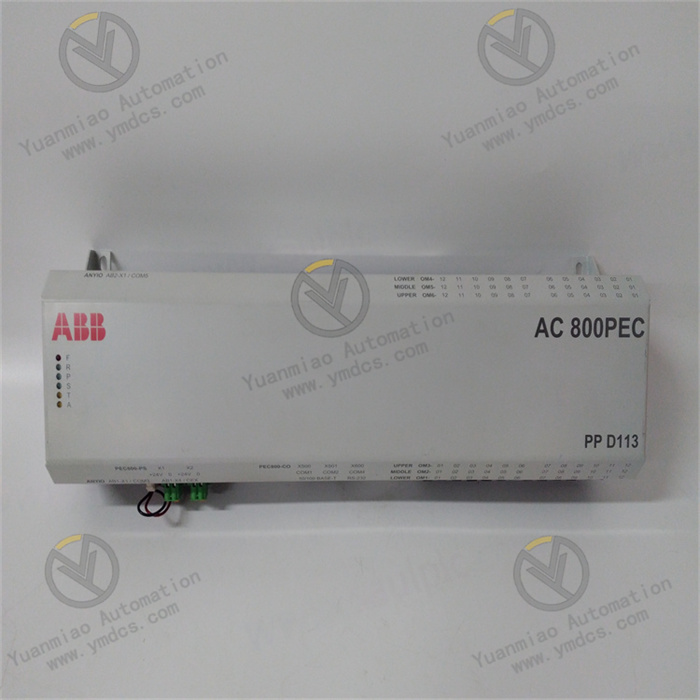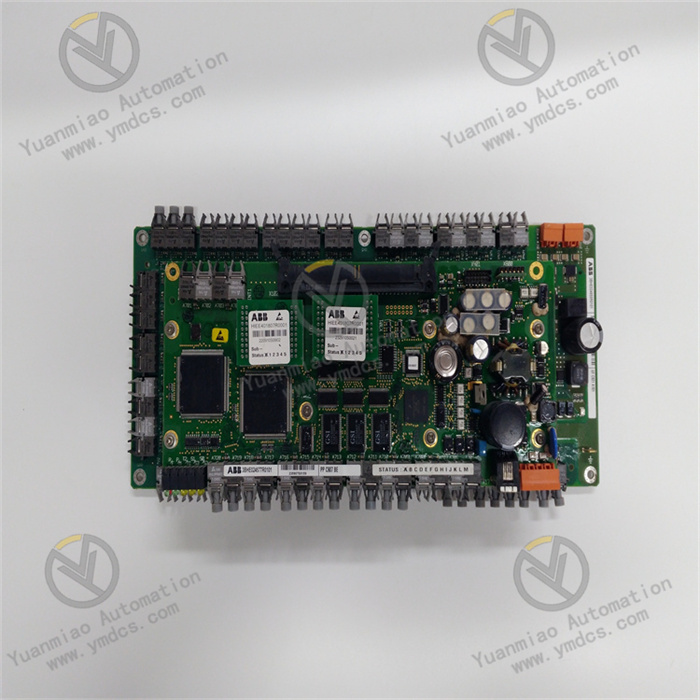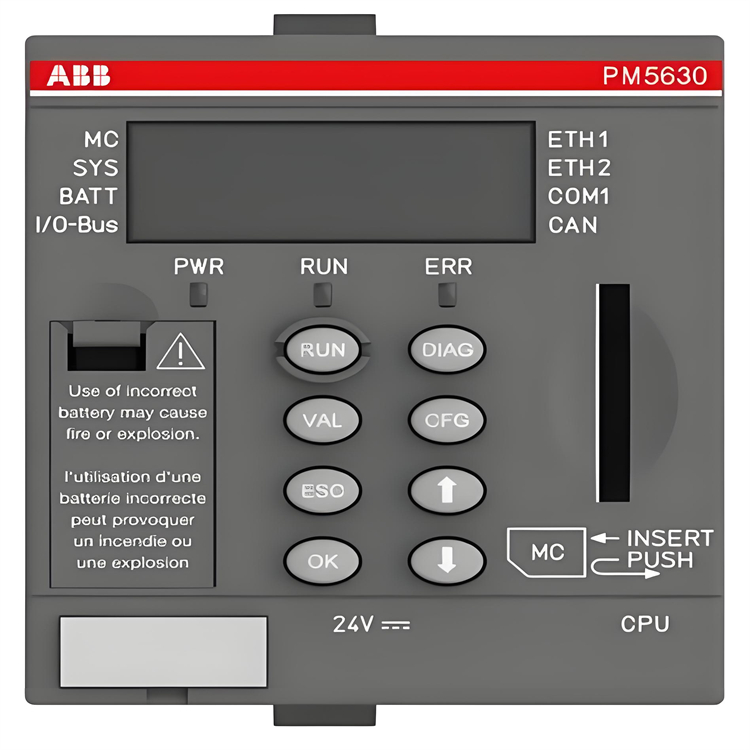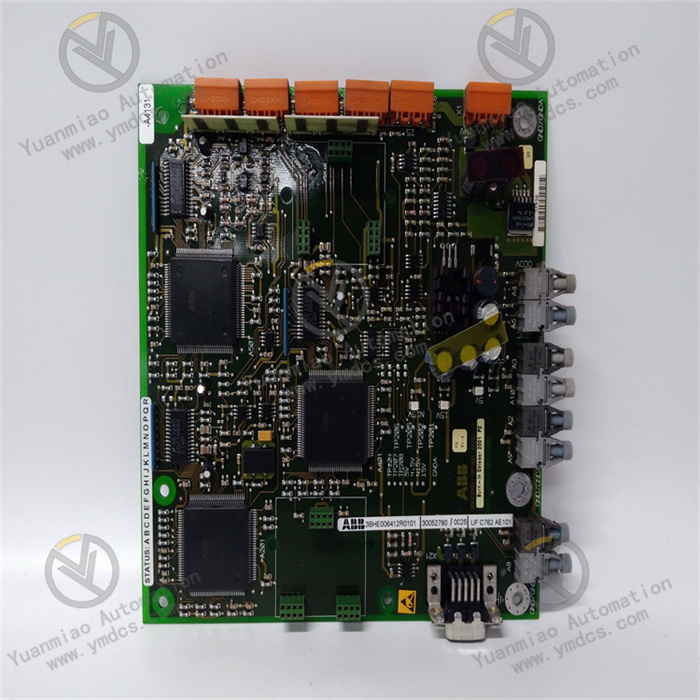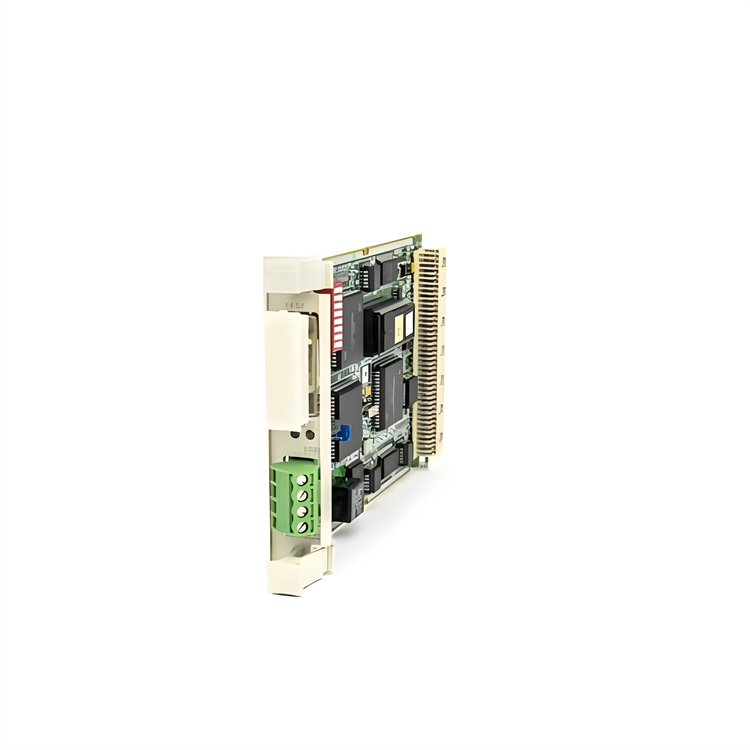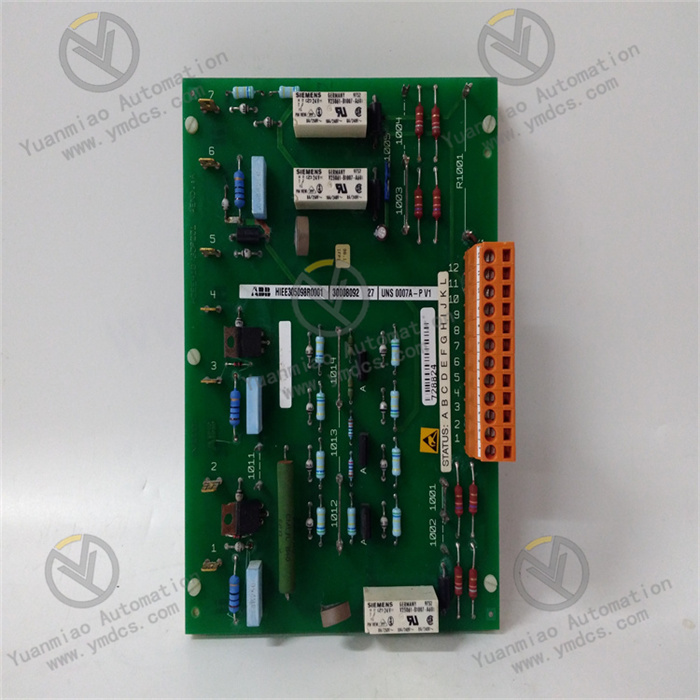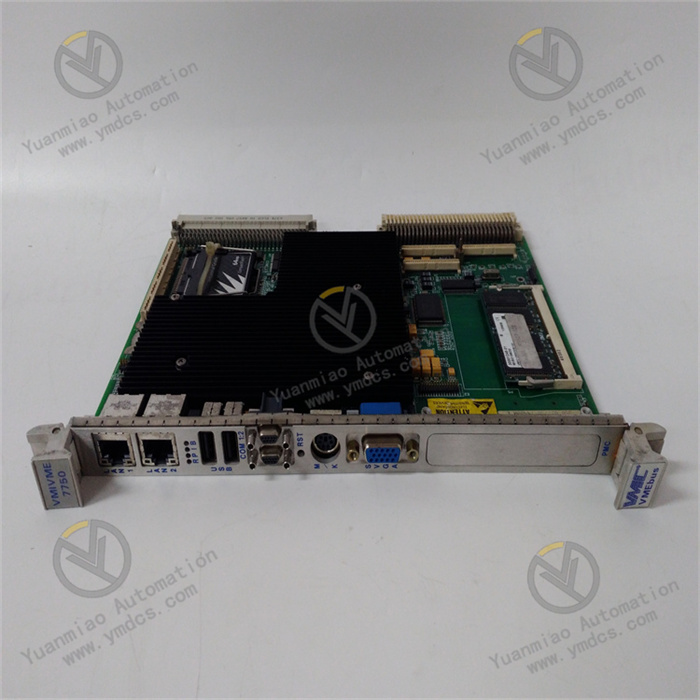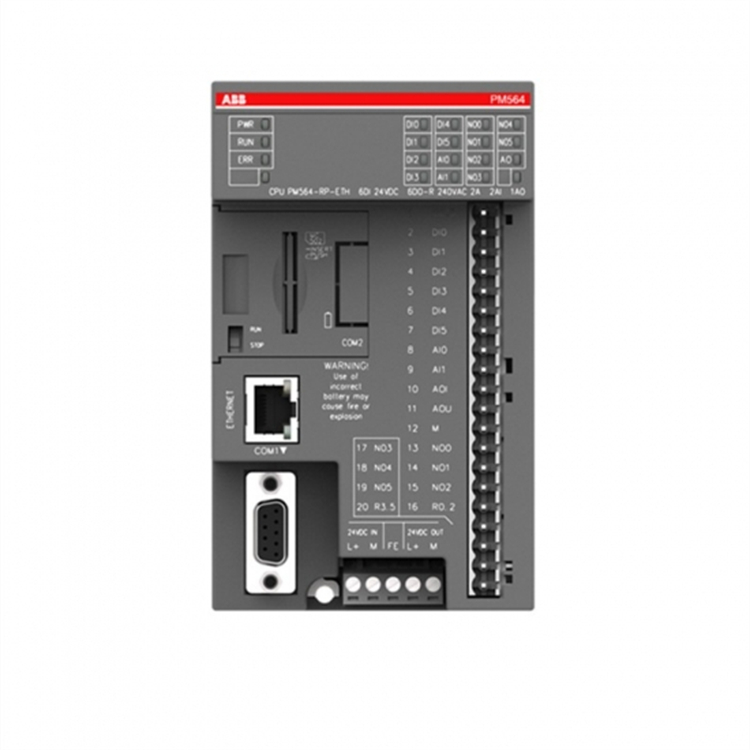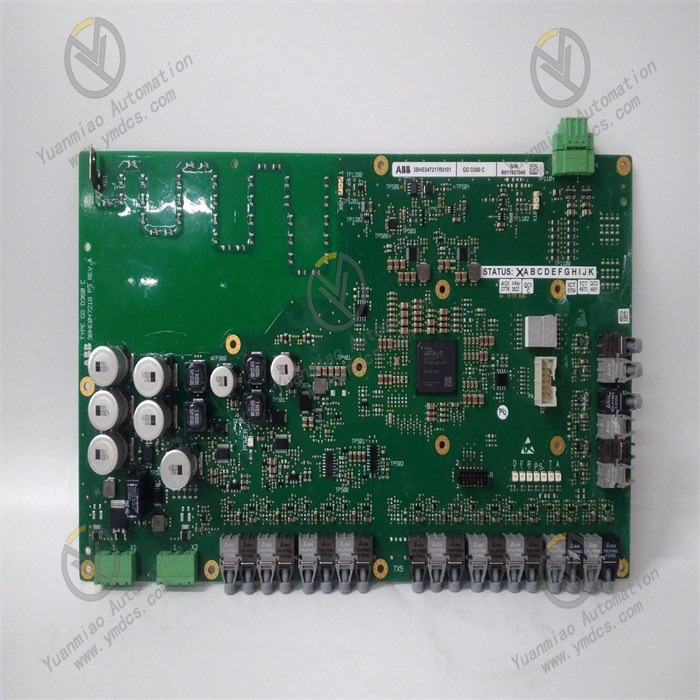Description
GE IC697CMM742-LL
I. Module Overview
GE Fanuc IC697CMM742-LL is an Ethernet interface module specially designed for the GE Series 90-70 Programmable Logic Controller (PLC) system, and is now a product under Emerson Automation. With the accelerating process of industrial automation, efficient and stable communication between devices is crucial. This module has emerged as a key component in building intelligent industrial control networks. It can build a communication bridge between the IC697 PLC and the Ethernet Local Area Network (LAN), enabling the PLC system to smoothly access the enterprise network architecture, realize high-speed data interaction and sharing, and help enterprises achieve intelligent and information-based production management.
GE Fanuc IC697CMM742-LL is an Ethernet interface module specially designed for the GE Series 90-70 Programmable Logic Controller (PLC) system, and is now a product under Emerson Automation. With the accelerating process of industrial automation, efficient and stable communication between devices is crucial. This module has emerged as a key component in building intelligent industrial control networks. It can build a communication bridge between the IC697 PLC and the Ethernet Local Area Network (LAN), enabling the PLC system to smoothly access the enterprise network architecture, realize high-speed data interaction and sharing, and help enterprises achieve intelligent and information-based production management.
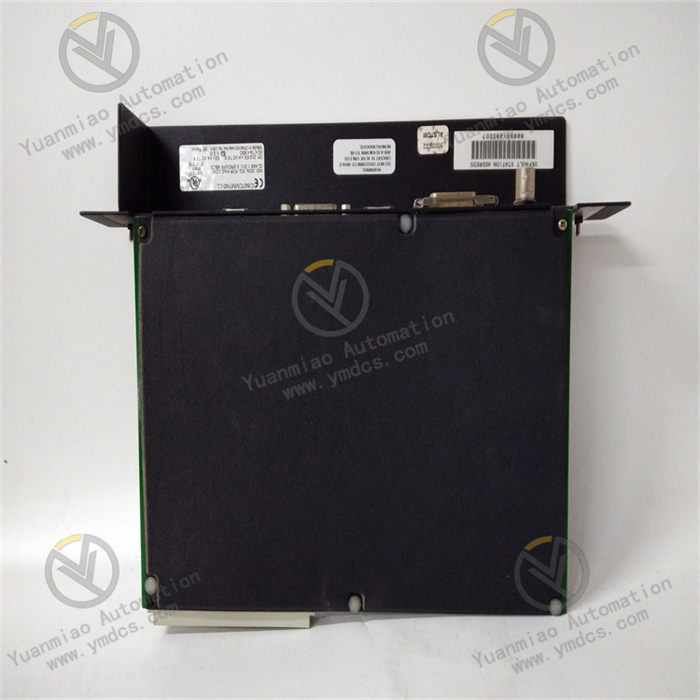
II. Technical Parameters
(1) Electrical Parameters
Operating Voltage: It relies on the PLC power supply and needs to be connected to +5 volts direct current (DC) and +12 volts direct current (DC). Among them, the +5-volt DC port typically consumes 2.0 amperes of current during normal operation, ensuring the stable operation of the core circuits and data processing units in the module; the +12-volt DC port, in extreme cases where an external AUI transceiver is used, has a maximum current requirement of 0.5 amperes to meet the power consumption of specific communication interface drivers and other functions.
(1) Electrical Parameters
Operating Voltage: It relies on the PLC power supply and needs to be connected to +5 volts direct current (DC) and +12 volts direct current (DC). Among them, the +5-volt DC port typically consumes 2.0 amperes of current during normal operation, ensuring the stable operation of the core circuits and data processing units in the module; the +12-volt DC port, in extreme cases where an external AUI transceiver is used, has a maximum current requirement of 0.5 amperes to meet the power consumption of specific communication interface drivers and other functions.
Current Consumption: The clear current parameter design, on the one hand, ensures the normal operation of each functional module of the module itself, and on the other hand, allows system integrators to accurately evaluate the power supply capacity and reasonably configure power supply equipment when building the system, avoiding system failures caused by insufficient power supply or overload, and ensuring the stable and reliable operation of the entire automated control system.
(2) Network Interface Parameters
Port Types: Equipped with three network ports, namely 10Base-T (RJ-45 interface), 10Base2 (BNC interface), and AUI (15-pin D-type interface). The 10Base-T port, with the versatility and convenience of the RJ-45 interface, can be directly connected to Ethernet hubs or repeaters using twisted-pair cables without additional external transceivers, greatly simplifying network wiring and connection processes; the 10Base2 port, using the BNC interface, can directly connect to 10Base2 networks built with thin coaxial cables, providing a seamless access solution for existing network facilities in specific industrial scenarios; the AUI port is more flexible. Although users need to equip themselves with AUI transceiver cables that meet the IEEE 802.3 standard and have the SQE option enabled, through this port, they can freely choose among various transmission media such as 10Base5, 10Base2, 10BaseT, 10BaseF, or 10Broad36, adapting to complex and diverse industrial network environments.
Port Types: Equipped with three network ports, namely 10Base-T (RJ-45 interface), 10Base2 (BNC interface), and AUI (15-pin D-type interface). The 10Base-T port, with the versatility and convenience of the RJ-45 interface, can be directly connected to Ethernet hubs or repeaters using twisted-pair cables without additional external transceivers, greatly simplifying network wiring and connection processes; the 10Base2 port, using the BNC interface, can directly connect to 10Base2 networks built with thin coaxial cables, providing a seamless access solution for existing network facilities in specific industrial scenarios; the AUI port is more flexible. Although users need to equip themselves with AUI transceiver cables that meet the IEEE 802.3 standard and have the SQE option enabled, through this port, they can freely choose among various transmission media such as 10Base5, 10Base2, 10BaseT, 10BaseF, or 10Broad36, adapting to complex and diverse industrial network environments.
Interface Standards: Fully supports IEEE 802.2 Logical Link Control Class I and IEEE 802.3 CSMA/CD Media Access Control 10Mbps standards. This means that the IC697CMM742 can work in coordination with most network devices on the market that follow these standards, achieving stable data transmission and interaction between network devices of different brands and models, ensuring the compatibility and versatility of network communication in industrial automation systems.
(3) Physical and Environmental Parameters
Dimensions: The module has an outer dimension of 21.8 cm in length, 4 cm in width, and 29.2 cm in height. Its compact and small design allows it to be easily installed in the limited space of the PLC rack without occupying too much valuable space, facilitating system integrators to layout and install in narrow control cabinets or equipment spaces.
Dimensions: The module has an outer dimension of 21.8 cm in length, 4 cm in width, and 29.2 cm in height. Its compact and small design allows it to be easily installed in the limited space of the PLC rack without occupying too much valuable space, facilitating system integrators to layout and install in narrow control cabinets or equipment spaces.
Operating Temperature: The operating temperature range is set between 0°C and +55°C (i.e., 32°F to 131°F). This temperature range fully considers the environmental temperature changes in most industrial sites. Whether in high-temperature workshops or industrial plants in cold regions, the IC697CMM742 can operate stably, ensuring stable communication of the industrial automation system under different ambient temperatures and reducing communication failures caused by temperature fluctuations.
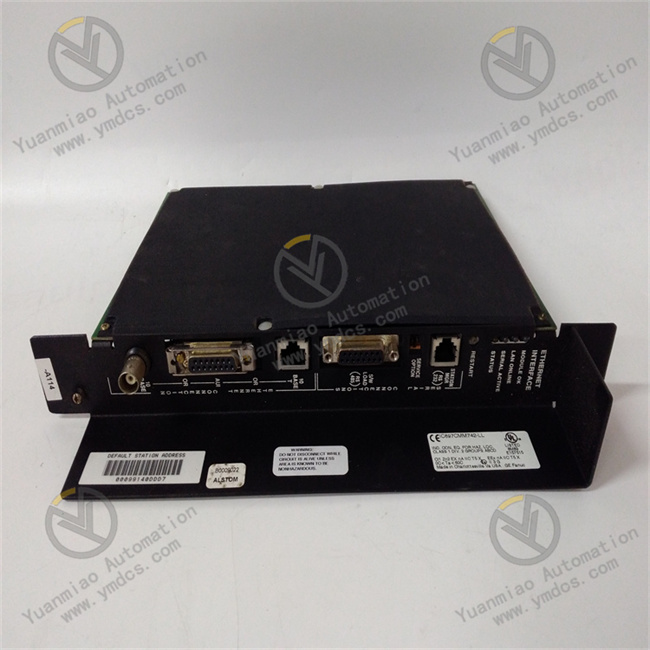
III. Functional Features
(1) Convenient Installation and Maintenance
Pre-loaded Firmware: The module comes with pre-loaded firmware from the factory. Users do not need tedious pre-preparations such as firmware burning during installation. They only need to insert it into the corresponding slot of the IC697 PLC rack and perform simple configuration with the IC641 PLC programming software to quickly put it into use, greatly shortening the project implementation cycle and improving the efficiency of system construction.
(1) Convenient Installation and Maintenance
Pre-loaded Firmware: The module comes with pre-loaded firmware from the factory. Users do not need tedious pre-preparations such as firmware burning during installation. They only need to insert it into the corresponding slot of the IC697 PLC rack and perform simple configuration with the IC641 PLC programming software to quickly put it into use, greatly shortening the project implementation cycle and improving the efficiency of system construction.
Firmware Upgrade: During the subsequent operation of the system, if firmware upgrade is needed due to technical updates or function optimization, it can be easily achieved through a personal computer connected to the RS-485 serial port. This convenient firmware upgrade method allows users to timely obtain the latest functions and performance optimizations, ensuring that the module always remains in the best working condition and adapts to the ever-changing communication needs of industrial automation.
Reset Button: The module panel is equipped with a reset button with multiple practical functions. Pressing the button can perform LED indicator testing to quickly check whether the indicators are working normally; it is used for module reset, and in case of minor faults such as communication abnormalities in the system, the module can be conveniently restarted to restore normal operation; it can also put the module into software loading state or maintenance state through this button under specific operation procedures, facilitating technical personnel to perform software updates, fault diagnosis, and maintenance operations.
(2) Rich Data Interaction Functions
Ethernet Global Data Exchange: Supports Ethernet Global Data (EGD) exchange based on configuration and logic, enabling efficient data sharing and interaction with other EGD-supported devices or systems in the industrial automation network. For example, in large automated production lines, the equipment operation data collected by the IC697 PLC can be quickly transmitted to the workshop management system through EGD, providing real-time and accurate data support for production decisions.
Ethernet Global Data Exchange: Supports Ethernet Global Data (EGD) exchange based on configuration and logic, enabling efficient data sharing and interaction with other EGD-supported devices or systems in the industrial automation network. For example, in large automated production lines, the equipment operation data collected by the IC697 PLC can be quickly transmitted to the workshop management system through EGD, providing real-time and accurate data support for production decisions.
TCP/IP Communication Service: With the Secure Reliable Transport Protocol (SRTP), it provides efficient TCP/IP communication services for the IC697 PLC. Under the industrial Internet of Things architecture, this enables the PLC to perform stable data transmission with remote servers, cloud platforms, etc., realizing functions such as remote monitoring, remote programming, and debugging. For example, engineers can remotely connect to the IC697 PLC on the factory site through the Internet using TCP/IP communication in the office to modify and optimize its programs, improving operation and maintenance efficiency.
Comprehensive PLC Programming and Configuration: The module not only realizes data communication functions but also supports comprehensive programming and configuration operations for the IC697 PLC. Technical personnel can flexibly set and adjust the control logic, data storage, communication parameters, etc., of the PLC through programming equipment connected to the module using relevant programming software, meeting the diverse needs of different industrial production processes for PLC control.
(3) Intuitive Status Monitoring
LED Indicators: The module is equipped with four LED indicators, namely "Module OK", "LAN Online", "Serial Active", and "Status OK". When the module passes the self-test and is in normal operation, the "Module OK" indicator is on; if it is successfully connected to the Ethernet LAN and communication is normal, the "LAN Online" indicator is always on, and it turns off once the network is interrupted or faulty, and blinks when data transmission is in progress; the "Serial Active" indicator is off when there is no data transmission through the serial port and blinks when there is data transmission, intuitively reflecting the serial communication status; the "Status OK" indicator being on indicates that the overall operation status of the module is good, being off indicates that there is an abnormal event requiring user attention, and blinking is a feedback of normal working status. Through these indicators, technical personnel can quickly and intuitively understand the operation status and communication situation of the module, and timely discover and solve potential problems.
LED Indicators: The module is equipped with four LED indicators, namely "Module OK", "LAN Online", "Serial Active", and "Status OK". When the module passes the self-test and is in normal operation, the "Module OK" indicator is on; if it is successfully connected to the Ethernet LAN and communication is normal, the "LAN Online" indicator is always on, and it turns off once the network is interrupted or faulty, and blinks when data transmission is in progress; the "Serial Active" indicator is off when there is no data transmission through the serial port and blinks when there is data transmission, intuitively reflecting the serial communication status; the "Status OK" indicator being on indicates that the overall operation status of the module is good, being off indicates that there is an abnormal event requiring user attention, and blinking is a feedback of normal working status. Through these indicators, technical personnel can quickly and intuitively understand the operation status and communication situation of the module, and timely discover and solve potential problems.
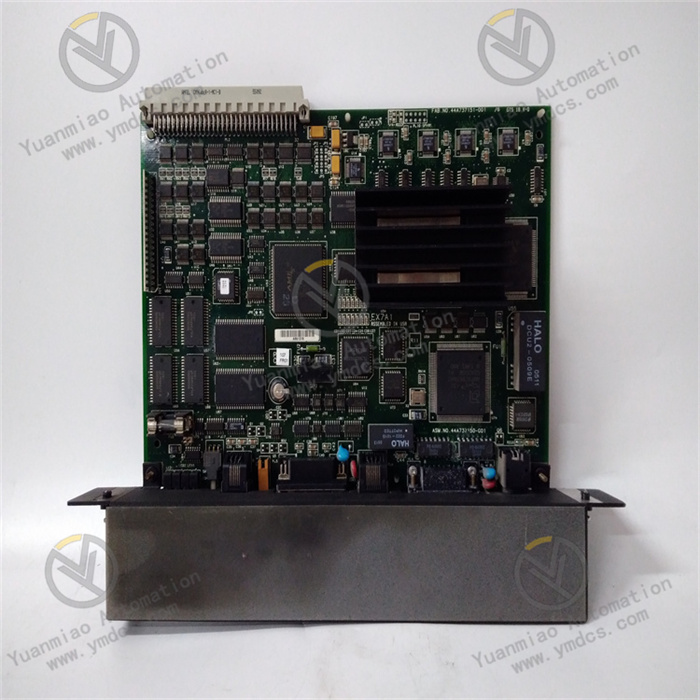
IV. Application Scenarios
(1) Manufacturing Automation Production Lines
In manufacturing automation production lines, from raw material loading, processing, assembly to finished product offline, each link involves numerous automated equipment and control systems. The IC697CMM742-LL Ethernet interface module can connect the IC697 PLC to the factory internal network, realizing data sharing and collaborative control between devices. For example, in an automobile parts manufacturing workshop, the PLC is connected to automated processing machines, robotic arms, material conveying lines, and other equipment through this module, collecting real-time equipment operation data such as machine processing parameters, robotic arm movement trajectories, and material conveying line operation speed, and transmitting these data to the workshop management system. At the same time, workshop managers can also remotely issue production tasks and adjust equipment parameters through this module via the network, realizing intelligent and efficient operation of the production line, improving production efficiency and product quality.
(1) Manufacturing Automation Production Lines
In manufacturing automation production lines, from raw material loading, processing, assembly to finished product offline, each link involves numerous automated equipment and control systems. The IC697CMM742-LL Ethernet interface module can connect the IC697 PLC to the factory internal network, realizing data sharing and collaborative control between devices. For example, in an automobile parts manufacturing workshop, the PLC is connected to automated processing machines, robotic arms, material conveying lines, and other equipment through this module, collecting real-time equipment operation data such as machine processing parameters, robotic arm movement trajectories, and material conveying line operation speed, and transmitting these data to the workshop management system. At the same time, workshop managers can also remotely issue production tasks and adjust equipment parameters through this module via the network, realizing intelligent and efficient operation of the production line, improving production efficiency and product quality.
(2) Data Acquisition and Monitoring in the Energy Industry
In the energy industry such as electric power and petrochemicals, the production process involves a large number of operation monitoring and data acquisition of key equipment. The IC697CMM742-LL can help the IC697 PLC build a reliable energy management system. Taking a power plant as an example, the module connects the PLC with various sensors (such as temperature sensors, pressure sensors, flow sensors, etc.) and actuators (such as valve controllers, motor drives, etc.), and transmits the equipment operation parameters collected by the sensors (such as generator temperature, steam pressure, fuel flow, etc.) to the monitoring center in real-time through Ethernet. Monitoring personnel in the monitoring center remotely monitor the equipment operation status through this module with the help of upper computer software. Once an abnormality is found, they can timely control the actuators through the PLC to make adjustments, ensuring the safe and stable operation of the energy production process, reducing energy consumption, and improving energy production efficiency.
In the energy industry such as electric power and petrochemicals, the production process involves a large number of operation monitoring and data acquisition of key equipment. The IC697CMM742-LL can help the IC697 PLC build a reliable energy management system. Taking a power plant as an example, the module connects the PLC with various sensors (such as temperature sensors, pressure sensors, flow sensors, etc.) and actuators (such as valve controllers, motor drives, etc.), and transmits the equipment operation parameters collected by the sensors (such as generator temperature, steam pressure, fuel flow, etc.) to the monitoring center in real-time through Ethernet. Monitoring personnel in the monitoring center remotely monitor the equipment operation status through this module with the help of upper computer software. Once an abnormality is found, they can timely control the actuators through the PLC to make adjustments, ensuring the safe and stable operation of the energy production process, reducing energy consumption, and improving energy production efficiency.
(3) Intelligent Warehousing and Logistics Systems
With the rapid development of the logistics industry, intelligent warehousing and logistics systems are increasingly widely used. The IC697CMM742-LL plays an important role in this field and can be used to connect the control systems of equipment such as stackers, shuttle cars, and conveyor lines in automated three-dimensional warehouses with the Warehouse Management System (WMS). When goods are stored in the warehouse, the operation status data of stackers, conveyor lines, and other equipment is transmitted to the WMS through the IC697 PLC and this Ethernet interface module. The WMS issues operation instructions to the equipment through the module according to inventory and order information, accurately controlling the stacker to move the goods to the designated location; the same applies when goods are shipped out of the warehouse. In addition, with the remote communication function of the module, managers of logistics enterprises can view information such as warehouse equipment operation status and inventory status in real-time in the office, realizing efficient management and remote operation and maintenance of the intelligent warehousing and logistics system, improving logistics operation efficiency, and reducing operating costs.
With the rapid development of the logistics industry, intelligent warehousing and logistics systems are increasingly widely used. The IC697CMM742-LL plays an important role in this field and can be used to connect the control systems of equipment such as stackers, shuttle cars, and conveyor lines in automated three-dimensional warehouses with the Warehouse Management System (WMS). When goods are stored in the warehouse, the operation status data of stackers, conveyor lines, and other equipment is transmitted to the WMS through the IC697 PLC and this Ethernet interface module. The WMS issues operation instructions to the equipment through the module according to inventory and order information, accurately controlling the stacker to move the goods to the designated location; the same applies when goods are shipped out of the warehouse. In addition, with the remote communication function of the module, managers of logistics enterprises can view information such as warehouse equipment operation status and inventory status in real-time in the office, realizing efficient management and remote operation and maintenance of the intelligent warehousing and logistics system, improving logistics operation efficiency, and reducing operating costs.



